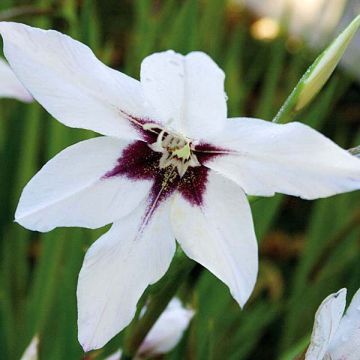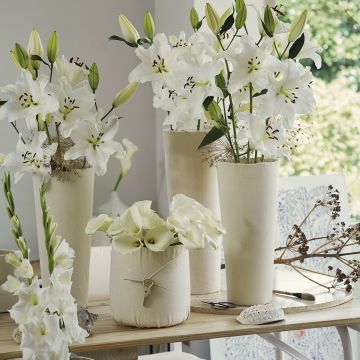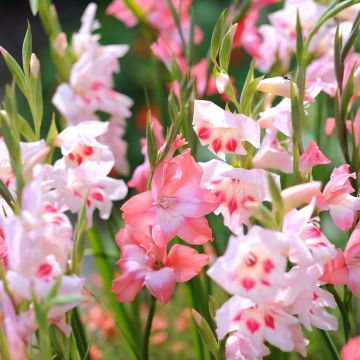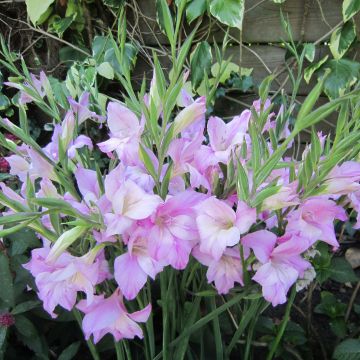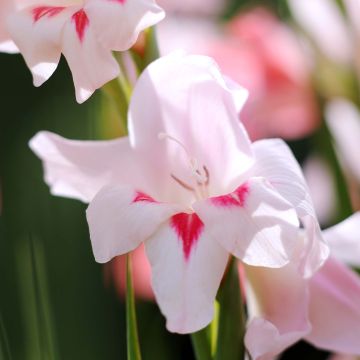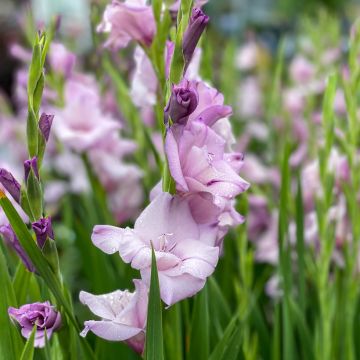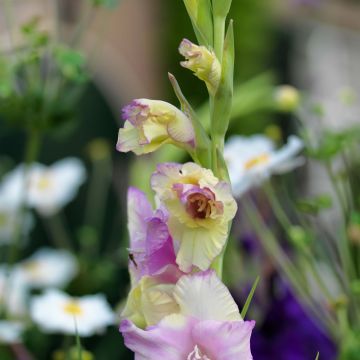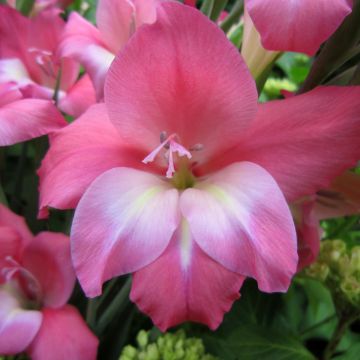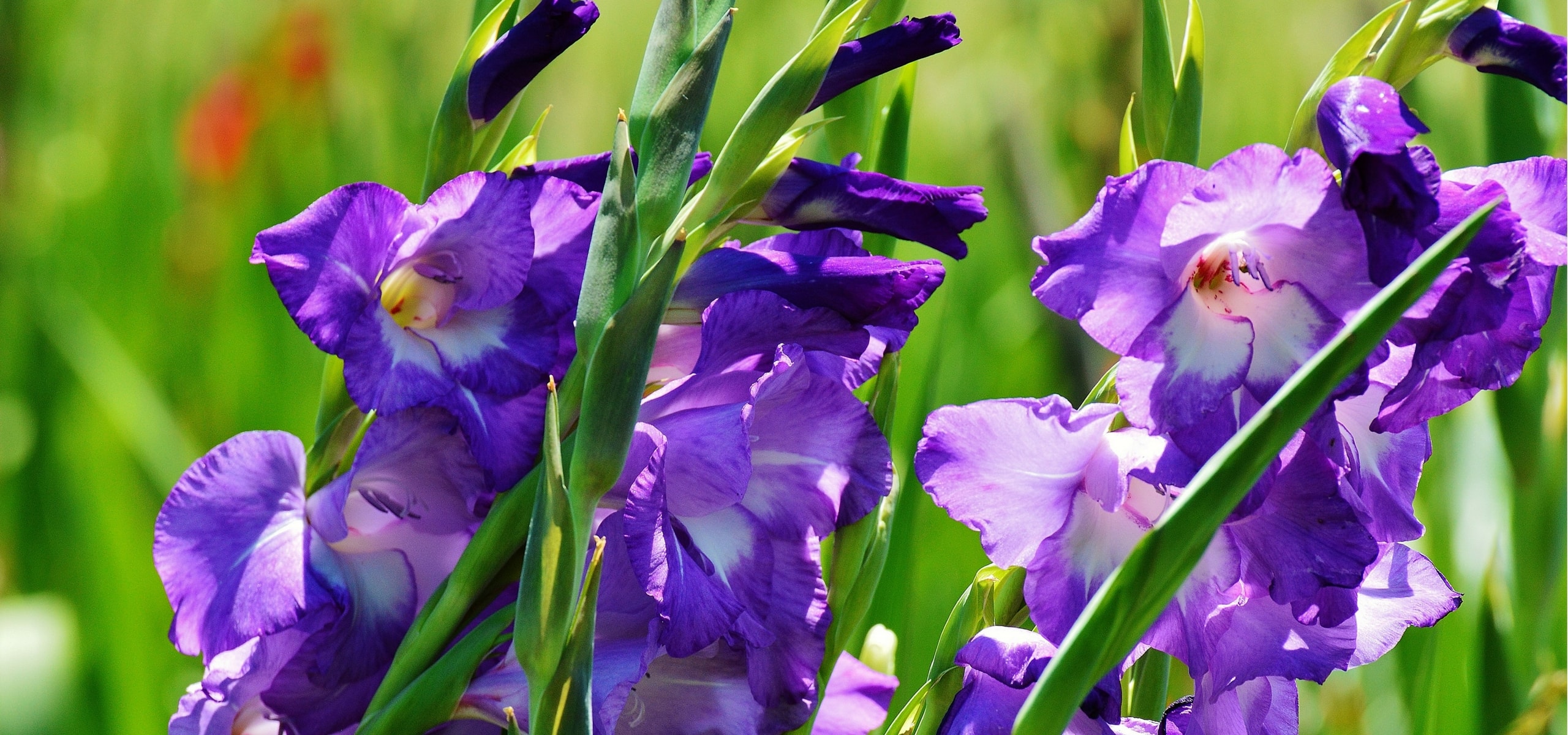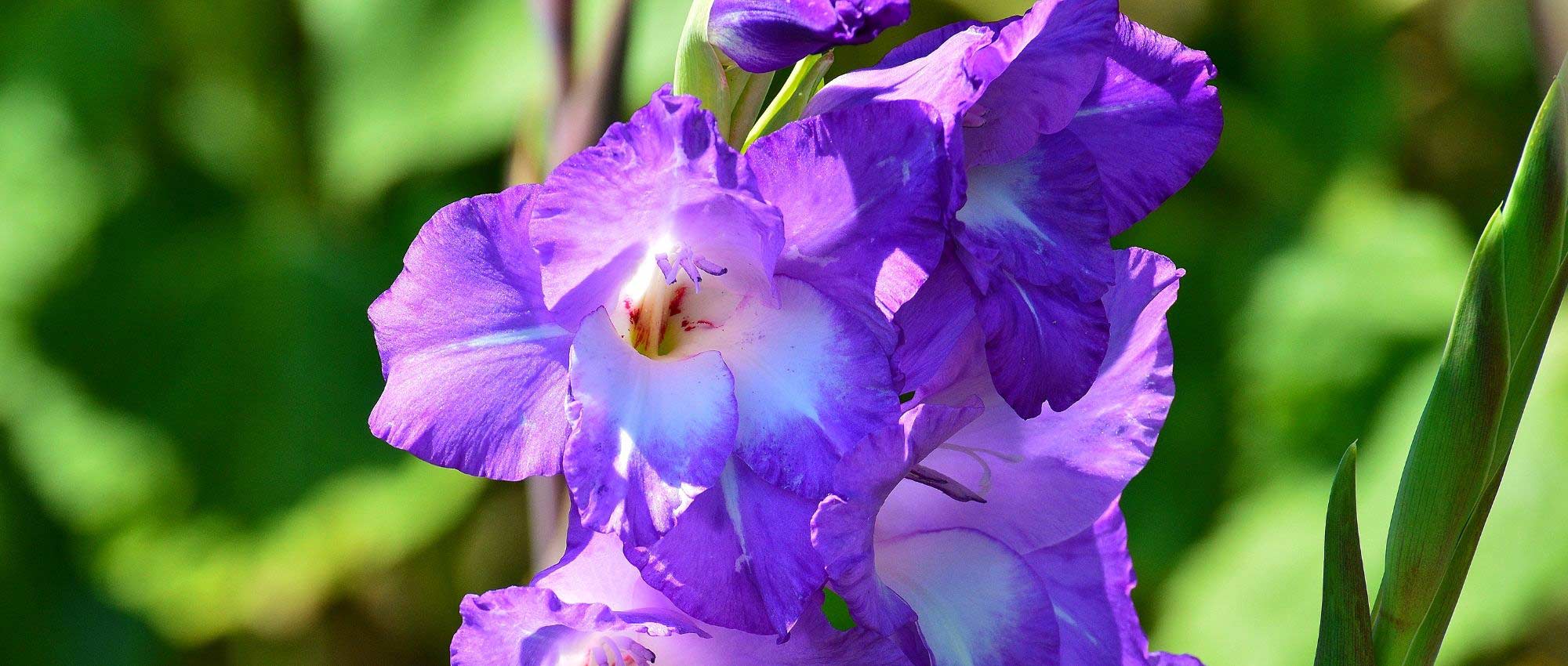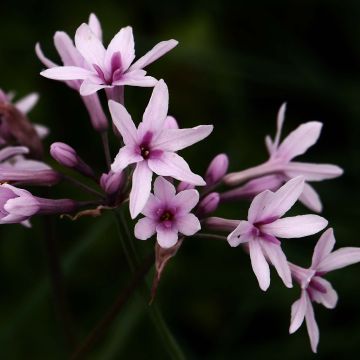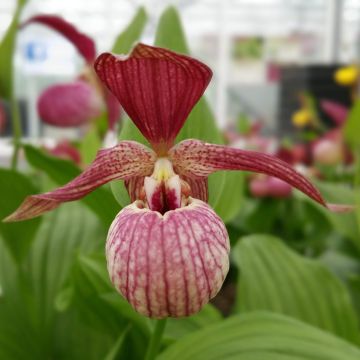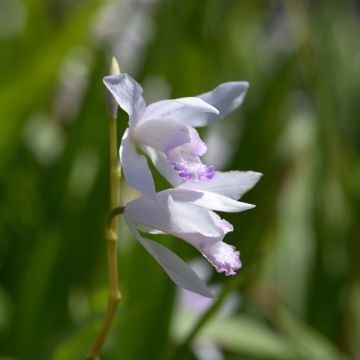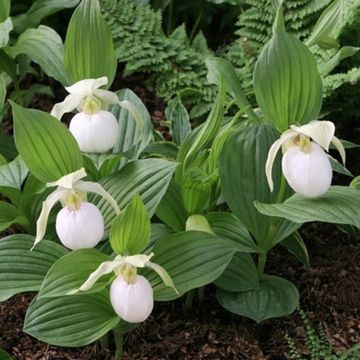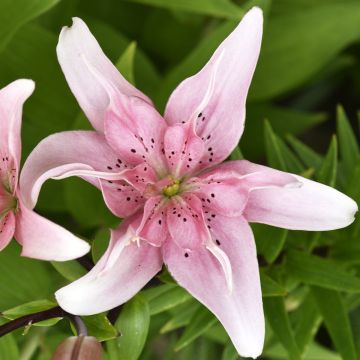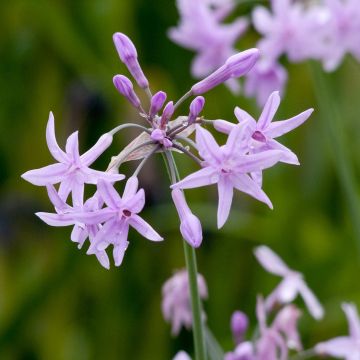

Gladiolus The Bride - Sword Lily
Gladiolus The Bride - Sword Lily
Gladiolus x colvillei The Bride
Colville's Gladiolus, Sword Lily
Beautiful bulbs, ready to go. Stay tuned.
Laurence, 05/03/2023
Special offer!
Receive a €20 voucher for any order over €90 (excluding delivery costs, credit notes, and plastic-free options)!
1- Add your favorite plants to your cart.
2- Once you have reached €90, confirm your order (you can even choose the delivery date!).
3- As soon as your order is shipped, you will receive an email containing your voucher code, valid for 3 months (90 days).
Your voucher is unique and can only be used once, for any order with a minimum value of €20, excluding delivery costs.
Can be combined with other current offers, non-divisible and non-refundable.
Why not try an alternative variety in stock?
View all →This plant carries a 6 months recovery warranty
More information
We guarantee the quality of our plants for a full growing cycle, and will replace at our expense any plant that fails to recover under normal climatic and planting conditions.
Would this plant suit my garden?
Set up your Plantfit profile →
Description
The Gladiolus colvillii 'The Bride' is a variety of dwarf gladiolus whose hardiness allows for year-round outdoor cultivation in our climate, with good mulching in winter. This bulb typically produces well-filled spikes of white star-shaped flowers, punctuated with purple stamens and pale yellow markings at the centre, usually in late spring. A hybrid, not commonly planted in gardens, that has a great chance of changing the perception of this plant, which is often considered too stiff and artificial. Charming, natural, and graceful, it integrates much better than larger hybrids into romantic or slightly wild borders.
The genus Gladiolus belongs to the iris family, and cultivated varieties are hybrids divided into 3 main groups: Grandiflorus (large-flowered), Primulinus (early-flowering), and Nanus (butterflies). Gladiolus colvillii is the first known hybrid in cultivation, obtained in England in 1823 through the cross-breeding of Gladiolus cardinalis and G. tristis. It is part of the gladiolus group characterised by rather small flowers, irregularly arranged on 40-45 cm (16-18in) tall stems, each bearing up to 10 florets. The lower petal of each star-shaped flower has a darker central zone.
'The Bride' is a very old cultivar, a white offspring of this Colvillii hybrid, introduced to the market in 1871, but still cultivated due to its true elegance. It is a perennial herbaceous plant with thin, very dark green sword-shaped leaves arranged in a fan shape, forming a 45 cm (18in) tall clump. The leaves are topped by an inflorescence in spike form, with up to 10 buds, each flower having 6 petals and measuring 8 cm (3in) in diameter, resembling small white lilies, and borne on very slim stems. The flowers gradually open from bottom to top, forming beautiful flower spikes. The storage organ is a corm, which is a swollen stem with scales. Each corm will produce 2 or 3 flower spikes.
Gladioli and their long colourful spikes are reminiscent of the 70s and somewhat formal floral arrangements. While they are irreplaceable in bouquets, in gardens, their silhouette benefits from the presence of plants with lush foliage to enhance their abundant yet wildly romantic flowering. Far from this archetype, the dwarf Gladiolus 'The Bride' fits well into simple perennial borders without requiring staking. It pairs well with ground cover roses ('The Fairy', 'Knock Out'), small grasses (Stipa pennata or tenuifolia), forget-me-nots, penstemons, and perennial flax, for example. Play with bright pink and red for vibrancy and add here and there some silver foliage (stachys, artemisias). For bouquet arrangements, cut the flower spikes when the first floret starts to open. Plant them at intervals of two weeks from early spring until the end of June to have flowers in the house and garden all summer long.
The gladiolus gets its name from the shape of its sword-like leaves, derived from the Latin word gladius. Its wild forms were often depicted in jewelry or on tapestries and fabrics made by the Semitic people before the Christian era.
Gladiolus The Bride - Sword Lily in pictures
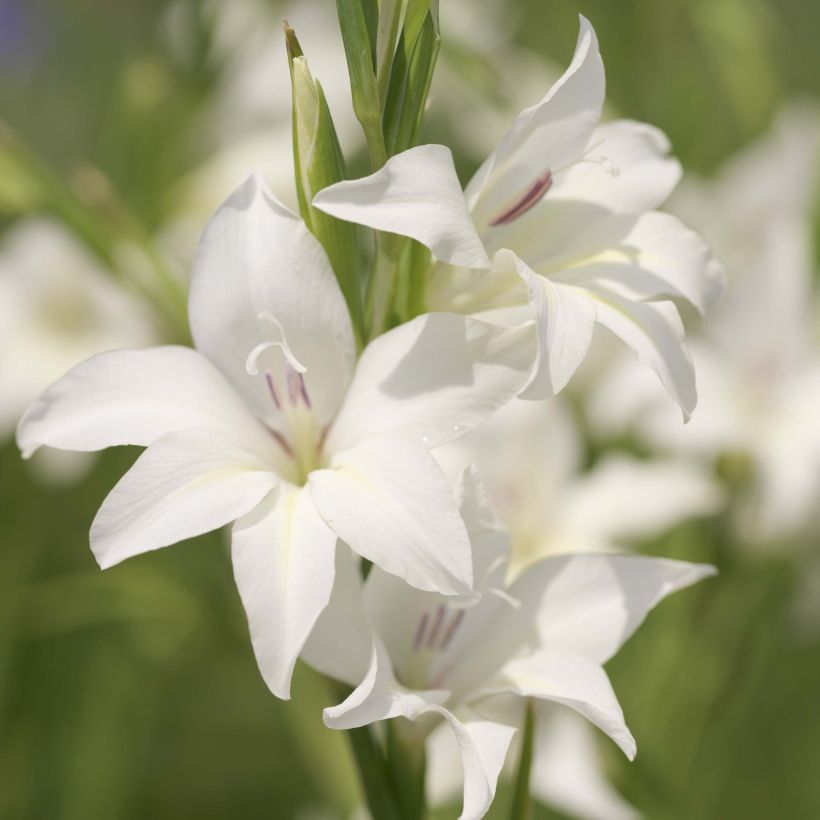



Plant habit
Flowering
Foliage
Botanical data
Gladiolus
x colvillei
The Bride
Iridaceae
Colville's Gladiolus, Sword Lily
Cultivar or hybrid
Other Gladioli
View all →Planting and care
Plant the bulbs of Colville's Gladiolus 'The Bride' in well-drained soil and in a sunny, sheltered position. Bury them under 8 to 10 cm (3 to 4in) of soil, spaced 10 to 15 cm (4 to 6in) apart.
The 'The Bride' Gladiolus loves rich, fertile but well-drained soils, so sandy soils are preferred and compact clay should be avoided. Avoid using manure to fertilise the soil, as it promotes bulb rot. The plant should not lack water during its growth and flowering period, but its bulbs appreciate being dry during the resting period. The corms of this variety can overwinter in the ground, in well-drained and very healthy soil, covered with a thick mulch to prevent damage from severe frosts. In very cold regions, the plants will be dug up as soon as the leaves have yellowed, to be stored in sand and kept dry, protected from heat and frost. You can also grow them in pots that you will protect from the cold (20 bulbs for a pot of 20 to 22 cm (8 to 9in)).
Planting period
Intended location
Care
Planting & care advice
-
, onOrder confirmed
Reply from on Promesse de fleurs
Similar products
Haven't found what you were looking for?
Hardiness is the lowest winter temperature a plant can endure without suffering serious damage or even dying. However, hardiness is affected by location (a sheltered area, such as a patio), protection (winter cover) and soil type (hardiness is improved by well-drained soil).

Photo Sharing Terms & Conditions
In order to encourage gardeners to interact and share their experiences, Promesse de fleurs offers various media enabling content to be uploaded onto its Site - in particular via the ‘Photo sharing’ module.
The User agrees to refrain from:
- Posting any content that is illegal, prejudicial, insulting, racist, inciteful to hatred, revisionist, contrary to public decency, that infringes on privacy or on the privacy rights of third parties, in particular the publicity rights of persons and goods, intellectual property rights, or the right to privacy.
- Submitting content on behalf of a third party;
- Impersonate the identity of a third party and/or publish any personal information about a third party;
In general, the User undertakes to refrain from any unethical behaviour.
All Content (in particular text, comments, files, images, photos, videos, creative works, etc.), which may be subject to property or intellectual property rights, image or other private rights, shall remain the property of the User, subject to the limited rights granted by the terms of the licence granted by Promesse de fleurs as stated below. Users are at liberty to publish or not to publish such Content on the Site, notably via the ‘Photo Sharing’ facility, and accept that this Content shall be made public and freely accessible, notably on the Internet.
Users further acknowledge, undertake to have ,and guarantee that they hold all necessary rights and permissions to publish such material on the Site, in particular with regard to the legislation in force pertaining to any privacy, property, intellectual property, image, or contractual rights, or rights of any other nature. By publishing such Content on the Site, Users acknowledge accepting full liability as publishers of the Content within the meaning of the law, and grant Promesse de fleurs, free of charge, an inclusive, worldwide licence for the said Content for the entire duration of its publication, including all reproduction, representation, up/downloading, displaying, performing, transmission, and storage rights.
Users also grant permission for their name to be linked to the Content and accept that this link may not always be made available.
By engaging in posting material, Users consent to their Content becoming automatically accessible on the Internet, in particular on other sites and/or blogs and/or web pages of the Promesse de fleurs site, including in particular social pages and the Promesse de fleurs catalogue.
Users may secure the removal of entrusted content free of charge by issuing a simple request via our contact form.
The flowering period indicated on our website applies to countries and regions located in USDA zone 8 (France, the United Kingdom, Ireland, the Netherlands, etc.)
It will vary according to where you live:
- In zones 9 to 10 (Italy, Spain, Greece, etc.), flowering will occur about 2 to 4 weeks earlier.
- In zones 6 to 7 (Germany, Poland, Slovenia, and lower mountainous regions), flowering will be delayed by 2 to 3 weeks.
- In zone 5 (Central Europe, Scandinavia), blooming will be delayed by 3 to 5 weeks.
In temperate climates, pruning of spring-flowering shrubs (forsythia, spireas, etc.) should be done just after flowering.
Pruning of summer-flowering shrubs (Indian Lilac, Perovskia, etc.) can be done in winter or spring.
In cold regions as well as with frost-sensitive plants, avoid pruning too early when severe frosts may still occur.
The planting period indicated on our website applies to countries and regions located in USDA zone 8 (France, United Kingdom, Ireland, Netherlands).
It will vary according to where you live:
- In Mediterranean zones (Marseille, Madrid, Milan, etc.), autumn and winter are the best planting periods.
- In continental zones (Strasbourg, Munich, Vienna, etc.), delay planting by 2 to 3 weeks in spring and bring it forward by 2 to 4 weeks in autumn.
- In mountainous regions (the Alps, Pyrenees, Carpathians, etc.), it is best to plant in late spring (May-June) or late summer (August-September).
The harvesting period indicated on our website applies to countries and regions in USDA zone 8 (France, England, Ireland, the Netherlands).
In colder areas (Scandinavia, Poland, Austria...) fruit and vegetable harvests are likely to be delayed by 3-4 weeks.
In warmer areas (Italy, Spain, Greece, etc.), harvesting will probably take place earlier, depending on weather conditions.
The sowing periods indicated on our website apply to countries and regions within USDA Zone 8 (France, UK, Ireland, Netherlands).
In colder areas (Scandinavia, Poland, Austria...), delay any outdoor sowing by 3-4 weeks, or sow under glass.
In warmer climes (Italy, Spain, Greece, etc.), bring outdoor sowing forward by a few weeks.






























